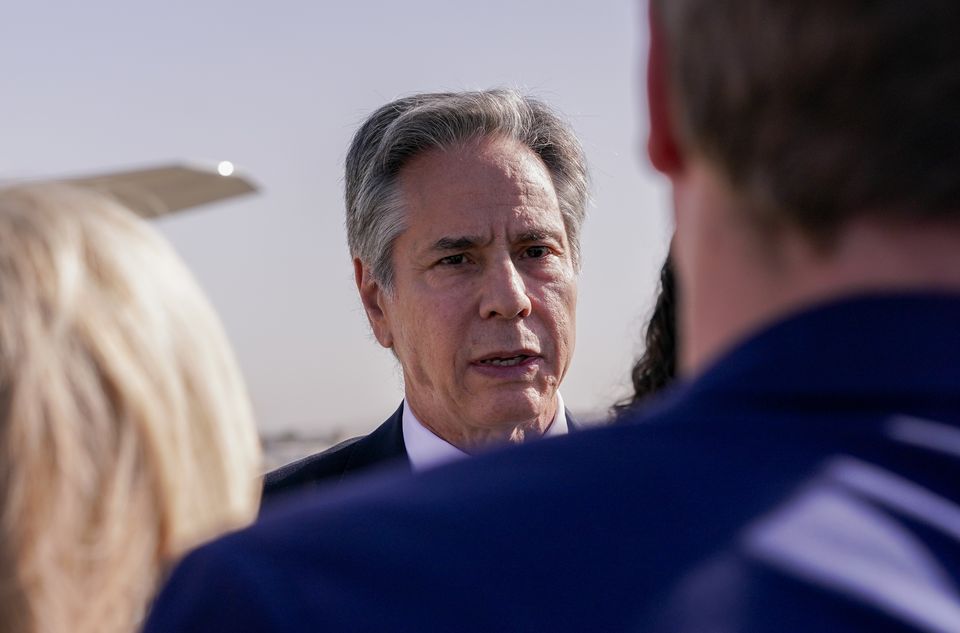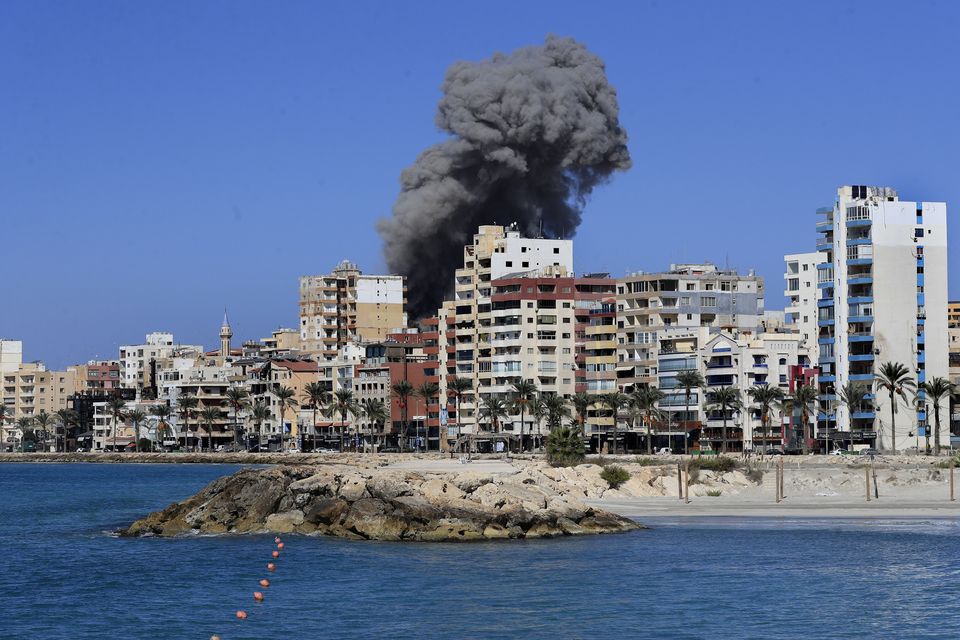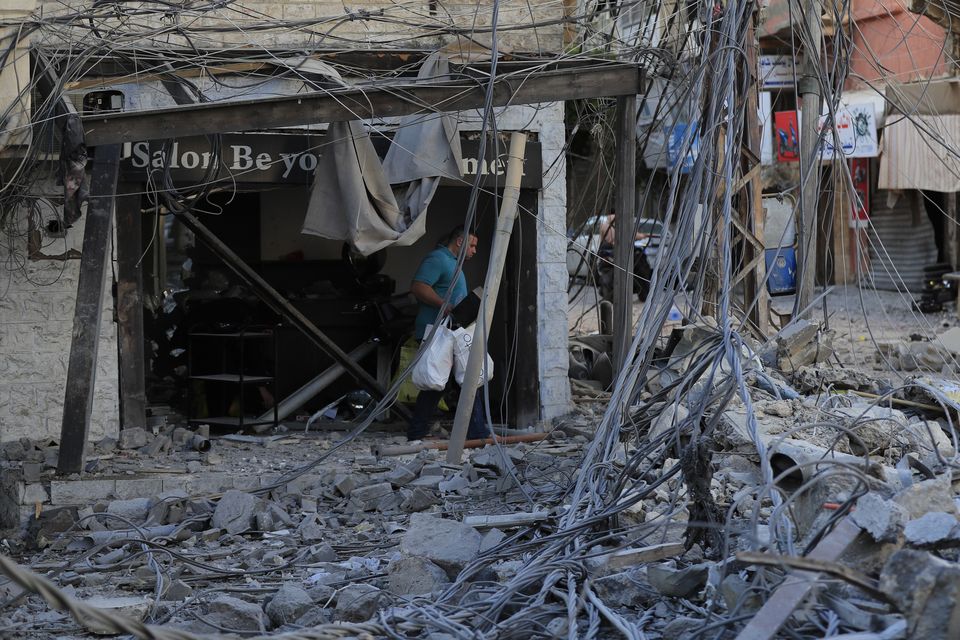Hezbollah has announced that Hashem Safieddine, one of its leading officials who had been widely expected to be the group’s next leader, was killed in an Israeli air strike.
The announcement came a day after Israel said it had killed Safieddine in a strike earlier this month in Beirut’s southern suburbs.
Mr Safieddine, a powerful cleric in the party ranks, had been expected to succeed Hassan Nasrallah, one of the group’s founders, who was killed in an Israeli air strike last month.
Hassan Nasrallah was killed in an Israeli air strike last month (Vahid Salemi/AP)
Israeli strikes have killed much of Hezbollah’s top leadership over recent weeks.
Meanwhile, Israeli jets struck multiple buildings in Lebanon’s southern coastal city of Tyre on Wednesday, sending up large clouds of black smoke.
The state-run National News Agency reported that an Israeli strike on the nearby town of Maarakeh killed three people. There were no reports of casualties in Tyre, where the Israeli military had issued evacuation warnings before the strikes.
Hezbollah fired another barrage of rockets into Israel, including two that set off air raid sirens in Tel Aviv before being intercepted.
A cloud of smoke could be seen in the sky from the hotel where US secretary of state Antony Blinken was staying on his latest visit to the region to try to renew ceasefire talks.
Hezbollah began firing rockets, missiles and drones into Israel, drawing retaliatory air strikes, after Hamas’s attack on October 7 last year triggered the war there.
Antony Blinken arrives at Ben Gurion International Airport (Nathan Howard/AP)
All-out war erupted in Lebanon last month, and Israeli strikes killed Mr Nasrallah and most of his senior commanders. Israeli ground forces invaded southern Lebanon at the beginning of October.
Tyre, a provincial capital, had largely been spared in the Israel-Hezbollah war but strikes in and around the city have intensified recently.
The 2,500-year-old city, about 50 miles south of Beirut, is known for its pristine beaches, ancient harbour and imposing Roman ruins and hippodrome, a Unesco World Heritage Site. It is among Lebanon’s largest cities and a vibrant metropolis popular with tourists.
The buildings struck on Wednesday were between several heritage sites, including the hippodrome and a cluster of seaside sites associated with the ancient Phoenicians and the Crusaders.
The Israeli military issued evacuation warnings a couple hours beforehand for dozens of buildings in the heart of the city. It told residents to move north of the Awali River, dozens of miles to the north.
Tyre is a popular tourist destination (Mohammad Zaatari/AP)
Avichay Adraee, an Israeli military spokesman, said there were Hezbollah assets in the area of the evacuation warning.
The city is in southern Lebanon, where the Shiite Muslim Hezbollah has a strong presence, and its legislators are members of the group or its allies, but Tyre is also home to civilians with no ties to the group, including a sizable Christian community.
First responders from Lebanon’s Civil Defense used loudspeakers to warn residents to evacuate the area and helped older adults and others who had difficulty leaving. Ali Safieddine, the head of the Civil Defense, told The Associated Press there were no casualties.
Dr Wissam Ghazal, a health official in Tyre, said the strikes hit six buildings, flattening four of them, about two and a half hours after the evacuation warnings. People displaced by the strikes could be seen in parks and sitting on the sides of nearby roads.
The head of Tyre’s disaster management unit, Mortada Mhanna, told the AP that although many people had fled, thousands of residents and others who have been displaced from other areas have chosen to stay in the city. Many people, including hundreds of families, previously had fled villages in south Lebanon to seek refuge in shelters in Tyre.
A man carries his belongings in the debris of destroyed buildings in Tyre (Mohammed Zaatari/AP)
An estimated 15,000 people remain in the city out of a pre-war population of about 100,000, Mr Mhanna said.
More than 2,500 people have been killed in Lebanon since the conflict began late last year, according to Lebanon’s Health Ministry, which does not distinguish between civilians and combatants.
Over a million people have fled their homes since September.
On the Israeli side, attacks have killed around 60 people, half of them soldiers. Near-daily rocket barrages have emptied communities across northern Israel, displacing 60,000 people.
In recent weeks Hezbollah has extended its range, launching scores of rockets every day and regularly targeting the northern Israeli city of Haifa. Most of the projectiles are intercepted or fall in open areas.



